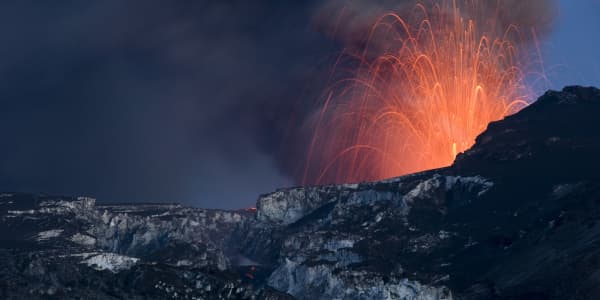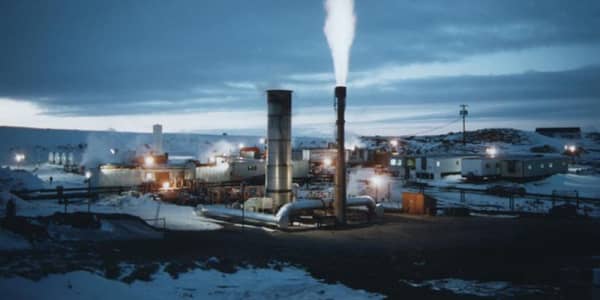... and why they might stay that way
From choking pollution and daylong traffic jams to cheek-to-jowl crowds and ear-splitting noise levels, CNBC takes a look at the woes plaguing some of the world's top travel destinations with populations of more than 1 million people—and why some of these metropolitan nightmare scenarios might not be improving anytime soon. Here's a look at some of the not-so-hot spots you might want to avoid.
—By Kenneth Kiesnoski
Posted 22 August 2014
Most polluted/noisiest: Delhi, India
Admit it: You thought Beijing, China, had "most polluted" in the bag. But it is, in fact, India's capital region that's been deemed the dirtiest in the world by the World Health Organization. Adding to its ongoing assault on the senses, Delhi, population 9.9 million, also comes in first in the latest worldwide urban noise ranking from Hearing.com.
With India's economy chugging along at a healthy clip—set to rise from the 4.7 percent annual growth recorded last year to 6.6 percent in 2016, according to the World Bank—and the Delhi metro area's ever-growing population predicted to swell to almost 26 million by 2020, things can only get worse. City officials say they are trying to rein in air particulate levels, but India's Center for Science and Development claims air pollution levels in the capital are up to 60 times worse than levels considered healthy. It points to government inaction and burgeoning car sales as major contributors to the problem.
Sources: World Health Organization; Hearing.com
Most congested: Moscow, Russia
Thinking of cruising around the Kremlin? Think again. The Russian capital is the world's worst when it comes to traffic jams, according to Dutch GPS manufacturer TomTom. As reported by CNBC.com, TomTom found that Moscow has an average congestion level of 74 percent, topping the firm's global traffic index, which compares travel times during non-congested hours with travel times in peak hours in 60 cities worldwide.
Journeys on Moscow's highways during morning or evening peak times take around 74 minutes per hour longer than at a time with no traffic delays, according to TomTom. And the total yearly delay for a 30-minute commute was 128 hours. The city may have an extensive world-class public transit system, but newly enriched Muscovites are apparently in love with private cars. Nick Cohn, global traffic congestion expert at TomTom, told CNBC in June that both highways and local roads are jam-packed. "There are not a lot of quick alternatives if you're navigating through Moscow," he said.
Source: TomTom Traffic Index
Most overcrowded: Mumbai, India
We don't mean to pile on India, but one of the country's other cities—Mumbai, its largest—also ranks at the top of the "worst of the worst" heap, coming in at No. 1 in terms of overcrowding. That's according to global urban think tank the City Mayors Foundation, dedicated to promoting "strong and prosperous cities as well as good local government."
With a population of 14.35 million crammed into 187 square miles, Mumbai—home to India's "Bollywood" movie industry—boasts a population density of 76,738 people per square mile (or 29,650 people per square kilometer, in the metric-based study). By way of comparison, the densest U.S. city, Los Angeles—Mumbai's entertainment counterpart in the West—is home to only 7,067 people per square mile, putting it in 90th place worldwide. And things are only going to get more crowded in the "Hollywood of India." City Mayors estimates that by 2020, Mumbai's population will rocket to almost 26 million.
Source: Citymayors.com
Most unfriendly: Johannesburg, South Africa
Opinions about the "least friendly" city in the world are legion ... and (literally) all over the map. In various polls and surveys posted over the last 12 months, places as varied as Moscow; Beijing; Islamabad, Pakistan; usual suspects Paris and New York—and even Newark, New Jersey—have earned the dubious designation.
Condé Nast Traveler's annual Readers' Choice Survey this year named Johannesburg, South Africa, as the world's least welcoming. Survey respondents pointed to the city's high crime rate and seemingly unscrupulous tradespeople. (However, annual criminal incidents in Jo'burg dropped to 14,397 in 2013 from 22,313 in 2004, according to South African crime statistics website Crimestatssa.com.) Runners-up included a monolingual and frosty Moscow and three cities in France: Cannes, Marseille and—you guessed it—Paris.
Source: Condé Nast Traveler
Most expensive: London, England
"Most expensive city" is a highly contested category. For example, a recent study from consulting firm Mercer fingered remote Luanda, Angola, as the world's priciest. But given that the average American businessperson likely won't be heading to southwestern Africa soon, we cast about for other surveys, and the most recent one from Expatistan seemed more applicable.
The website polled 200,000 users for data on prices in 1,600 cities worldwide and determined that it's London that really breaks the bank. The British capital "boasts" monthly transport costs of about $220, sky-high rents and hotel rates, and gasoline prices of nearly $9 per gallon.
Source: Expatistan.com
Most dangerous: Caracas, Venezuela
Regional cities San Pedro Sula, in Honduras, and Acapulco, Mexico, top the latest list of the world's most dangerous cities compiled by Mexico's Citizens' Council for Public Security & Criminal Justice, but if rankings are restricted to global cities of more than 1 million inhabitants, third-place "winner" Caracas, Venezuela, moves to the top.
The Venezuelan capital's annual rate of nearly 119 murders per 100,000 residents is more than double that of the nearest U.S. contender, New Orleans (56.13). The violent state of affairs in Caracas, population 3.25 million, looks set to stay the same for at least a half decade more, with President Nicolás Maduro—elected last year to a six-year term—continuing the socioeconomic policies of his radical predecessor Hugo Chávez, who held power from 1995 until his death in March 2013. (However, Máduro's administration claims a disputed official murder rate of 54 murders per 100,000 people, thanks to his "Safe Homeland" program of increased military patrols in Caracas.)
Source: Citizens' Council for Public Security & Criminal Justice (Mexico)
Most disadvantaged: Conakry, Guinea
The current Ebola virus outbreak in West Africa aside, travelers looking for fertile business territory, First World accommodations and efficient transportation and communications might want to skip Conakry, capital of Guinea. Named by the United Nations as the world's poorest city with a population over 1 million people (Smaller Monrovia, Liberia—with nearly 971,000 people—actually tops the list), Conakry stands out for its slow public transportation, which the U.N. points to as a major factor hampering its development, according to website TheRichest.com. In fact, up to 70 percent of travel in Conakry—population 1.67 million—is done on foot.
Although the World Bank tracked a 3.9 percent annual growth in GDP in Guinea as recently as 2012, the country's 55.2 percent poverty rate (2012) and below-average annual per capita income of $460 per person (2013) make radical positive change in the immediate future unlikely.
Source: UN Habitat; TheRichest.com; World Bank





